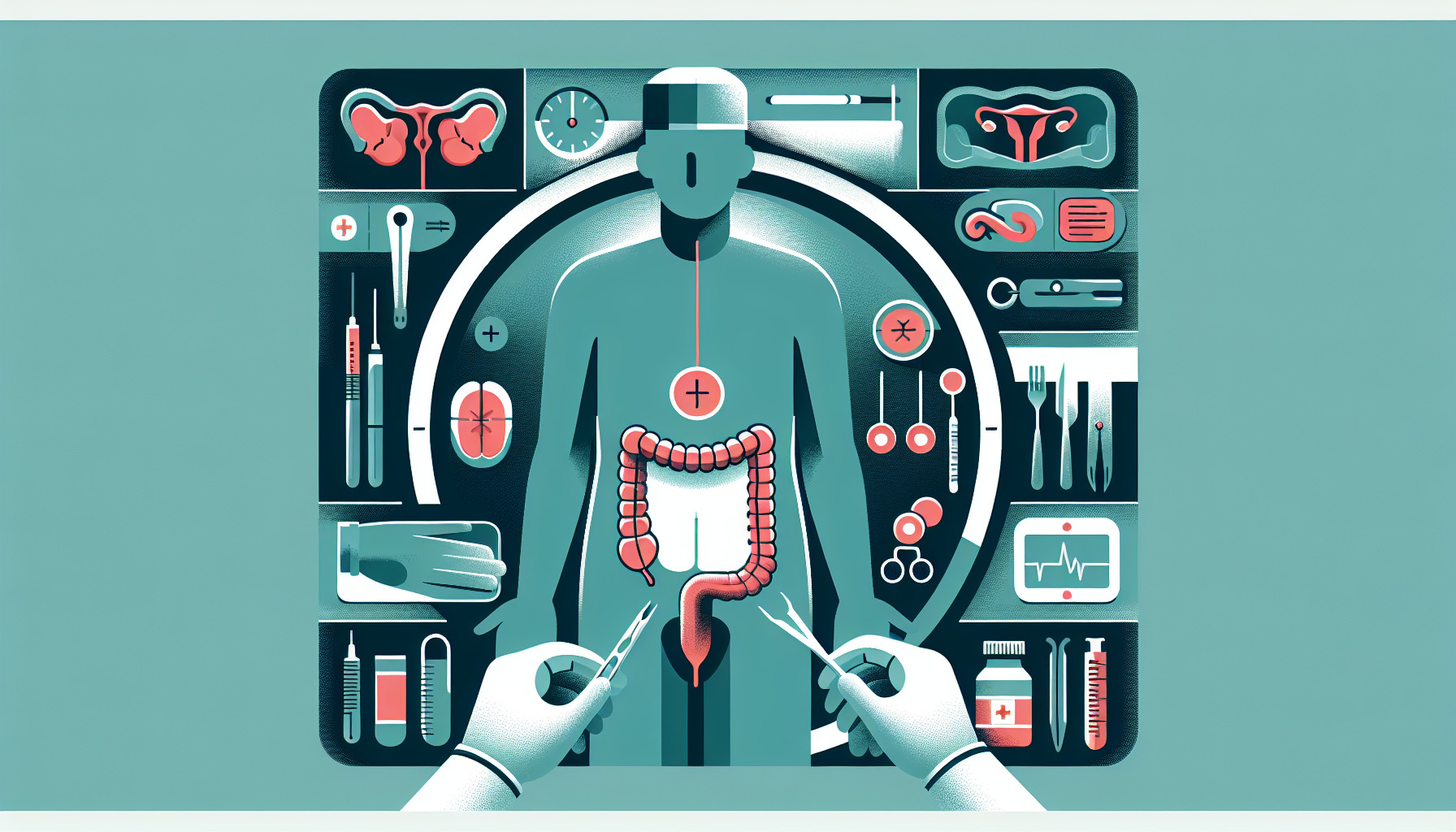Our Summary
This research article discusses a rare case of a 44-year-old man who developed septic shock and small liver abscesses (pockets of infected fluid) after a standard hemorrhoid removal surgery known as Milligan-Morgan hemorrhoidectomy. This type of complication is quite unusual - a search of previous medical literature found only three other cases of liver abscesses after this type of surgery. The patient was treated in the intensive care unit with intravenous antibiotics for six weeks, and was able to leave the hospital in good condition after 17 days. The researchers suggest that for patients with certain risk factors, doctors might consider using antibiotics as a preventive measure. This would need to be decided on a case by case basis.
FAQs
- What is a Milligan-Morgan hemorrhoidectomy?
- What is the likelihood of developing liver abscesses after a Milligan-Morgan hemorrhoidectomy?
- Can antibiotics prevent complications after a Milligan-Morgan hemorrhoidectomy?
Doctor’s Tip
One helpful tip a doctor might give a patient about hemorrhoidectomy is to follow post-operative care instructions carefully to reduce the risk of complications. This may include taking prescribed pain medications, keeping the surgical area clean and dry, and avoiding strenuous activities that could strain the healing tissues. It is also important to eat a high-fiber diet, stay hydrated, and avoid straining during bowel movements to prevent further irritation to the surgical site. If you experience any unusual symptoms such as excessive pain, bleeding, or signs of infection, it is important to contact your doctor immediately.
Suitable For
Hemorrhoidectomy is typically recommended for patients who have severe or recurring hemorrhoids that do not respond to other treatments such as over-the-counter creams or lifestyle changes. Some specific patient populations who may be recommended for hemorrhoidectomy include:
- Patients with large, protruding hemorrhoids that cause significant discomfort, pain, or bleeding.
- Patients with internal hemorrhoids that have prolapsed (fallen out of the anal canal) and cannot be pushed back in.
- Patients with thrombosed hemorrhoids, which are hemorrhoids that have developed blood clots and are extremely painful.
- Patients with chronic hemorrhoids that do not improve with conservative treatments such as fiber supplements, stool softeners, and sitz baths.
- Patients with a history of hemorrhoids that have caused complications such as anal fissures, fistulas, or skin tags.
It is important for patients to discuss their symptoms and medical history with their healthcare provider to determine if hemorrhoidectomy is the most appropriate treatment option for them.
Timeline
Before hemorrhoidectomy:
- Patient experiences symptoms of hemorrhoids such as pain, itching, bleeding, and swelling in the anal area.
- Patient seeks medical advice and is diagnosed with hemorrhoids by a healthcare provider.
- Treatment options such as conservative measures (dietary changes, topical creams, etc.) are tried first, but if symptoms persist, surgery may be recommended.
- Patient undergoes pre-operative evaluations and preparations for hemorrhoidectomy, including discussing risks and benefits with the surgeon.
After hemorrhoidectomy:
- Patient undergoes hemorrhoidectomy surgery, which involves the removal of the hemorrhoids through various techniques such as excision, ligation, or stapling.
- Patient may experience post-operative pain, discomfort, and bleeding, which are managed with pain medications, stool softeners, and sitz baths.
- Patient is monitored for complications such as infection, bleeding, or blood clots in the weeks following surgery.
- Patient follows post-operative care instructions provided by the surgeon, including dietary recommendations, hygiene practices, and follow-up appointments.
- Patient gradually recovers over the next few weeks, with symptoms of hemorrhoids improving and healing of the surgical site.
- Patient may experience potential complications such as infection, scarring, or rare cases like liver abscesses, which require further treatment and monitoring.
What to Ask Your Doctor
- What are the potential risks and complications associated with hemorrhoidectomy surgery?
- Are there any specific risk factors that I have that could increase the chance of complications like septic shock or liver abscesses?
- How common are complications like septic shock and liver abscesses after hemorrhoidectomy surgery?
- What steps can be taken to reduce the risk of developing complications after hemorrhoidectomy surgery?
- How will my recovery process be monitored to ensure that complications are detected early and treated promptly?
- What signs and symptoms should I watch out for after surgery that may indicate a potential complication?
- Are there any alternative treatment options to consider that may have a lower risk of complications?
- How often will I need follow-up appointments after surgery to monitor my recovery and address any concerns?
- Are there any preventive measures, such as antibiotics, that can be taken before or after surgery to reduce the risk of complications in my case?
- What is the likelihood of experiencing a complication like septic shock or liver abscesses in my specific case, and how can we work together to minimize that risk?
Reference
Authors: Peeters M, De Raeymaeker X, Karimi A, van der Pas M. Journal: Acta Chir Belg. 2023 Aug;123(4):418-421. doi: 10.1080/00015458.2021.2024694. Epub 2022 Jan 8. PMID: 34968166
